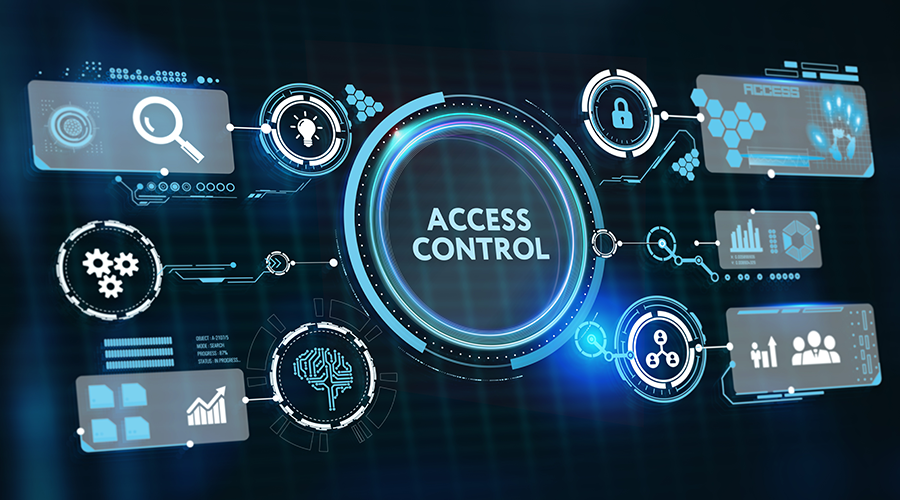With the uptick in violent incidents against healthcare workers and facilities alike, security has become a focal point of effectively managing a healthcare facility. Access controls may be able to help secure areas and prevent unauthorized access. In this manufacturer roundtable, Healthcare Facilities Today speaks with access control manufacturers about reducing the incidence of violence in healthcare facilities.
How can access controls help reduce the incidence of violence in healthcare facilities?
“Modern electronic access control systems can significantly mitigate the risk of violence in healthcare facilities by creating secure environments through managed and restricted access. By limiting entry, or access within a facility, to authorized personnel only (this could include staff, patients or visitors), these systems ensure that potentially dangerous individuals are unable to gain access to sensitive areas where they could cause harm.
In the case of a violent incident, access control systems can go into lockdown mode. Localized lockdowns can be activated by authorized staff, or remotely by administrators, immediately locking down specific doors, buildings or an entire facility.
Additionally, the audit trails generated by access control systems are invaluable for both preventing and responding to violence. This combination of deterrence and accountability helps maintain a more peaceful environment in healthcare settings, where the focus can remain on patient care and wellbeing.”
— Kyle Pfeiffer, industry solutions leader – healthcare, SALTO Systems
“Effective, streamlined access control is essential to maintaining secure healthcare facilities today.
Should a critical event or violent incident occur, areas of an access-managed healthcare facility can be locked down instantly to help contain the threat. Advanced access control solutions can incorporate personal panic devices and video analytics to identify and/or mitigate a threat before it escalates. Personal panic devices utilizing Real Time Location Services can be initiated by an individual if they perceive a threat, notifying security of who needs help and where to send it. Additionally, integrated video with voice aggression analytics can help identify an incident before it escalates, alerting security to send a de-escalation team to help mitigate the threat.
When these types of devices and systems are integrated into the access control solution, security teams are provided with a unified system, what is sometimes referred to as a “single pane of glass,” to monitor in their operations center. LenelS2’s open integration strategy is a key enabler for this user-friendly approach, saving time and ensuring a seamless, unified experience for security professionals.”
— Doug Coppola, senior director of healthcare solutions, North America, LenelS2
“It is more important than ever to create and maintain a healthy, secure and safe working environment so healthcare workers can stay focused on giving patients the best care possible. Access control plays a critical role in this process because it helps ensure that the right people have access to the right areas.
Hospitals must deal with the complexity of managing access to many different areas, such as patient rooms, maternity wards, ICUs, operating rooms, behavior health wards, pharmacies, patient file storage and more – for healthcare professionals, patients and visitors. Visitor access can be particularly challenging in healthcare environments because it is necessary to quickly assess whether a visitor should be allowed or strictly forbidden. While access for staff and patients is commonly managed using badge or wristband credentials, visitors must check in and be validated quickly. ASSA ABLOY Group brand HID Global developed a solution to address this and other credentialing needs. Called HID SAFE for Healthcare, it allows patients to register approved visitors. It can also be used by HR and administrators to standardize, centralize, and automate the onboarding of personnel and others that need physical access to a medical center or clinic. It also provisions these identities to integrate into a facility’s diverse Physical Access Control Systems (PACS). In addition, the ability to expand access control to more doors provides greater control over who goes where. This can be accomplished using wireless access control technology, such as ASSA ABLOY’s Intelligent WiFi or Aperio wireless solutions.
In behavioral health settings, access control solutions should incorporate ligature-resistant door hardware that is free from sharp edges and catch points. Patient rooms can also be equipped with specialty access doors or hardware, such as double swing hinges that staff can release in the event a patient has barricaded the door or otherwise prevented it from opening into the room.”
— Thomas Morgan, director of business development for healthcare, ASSA ABLOY Door Security Solutions
Jeff Wardon, Jr. is the assistant editor for the facilities market.

 Hand, Foot and Mouth Disease on the Rise
Hand, Foot and Mouth Disease on the Rise Preparing for the Hazards of Winter Weather
Preparing for the Hazards of Winter Weather BayCare Reveals Pagidipati Children's Hospital at St. Joseph's
BayCare Reveals Pagidipati Children's Hospital at St. Joseph's Why Identity Governance Is Becoming a Facilities Management Issue
Why Identity Governance Is Becoming a Facilities Management Issue Habitat Health Opens South Los Angeles PACE Center
Habitat Health Opens South Los Angeles PACE Center